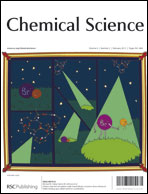A metal–amide dependent, catalytic C–H functionalisation of triphenylphosphonium methylide†
Abstract
We report the [Y{N(SiMe3)2}3] catalysed dehydrocoupling of triphenylphosphonium methylide with

- This article is part of the themed collection: C-H Functionalization

 Please wait while we load your content...
Please wait while we load your content...